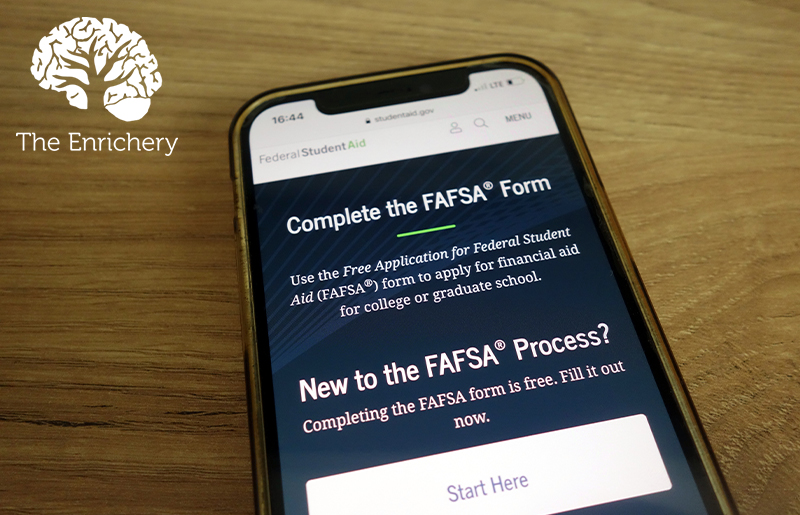
2024-2025 FAFSA Changes Demystified: Cypress Area Education Experts Break Down Amendments
The FAFSA (Free Application for Federal Student Aid) is the form needed to determine a student’s eligibility for federal and state financial assistance, which can look like grants, scholarships, work-study funds, and student loans. The process is free and typically takes applicants under one hour to complete, and it can be the difference maker when it comes to paying for college or trade school. It’s essential, and this year it is changing. Here’s what you need to know about the amendments to the FAFSA for the 2024-2025 application process and beyond.
The FAFSA Simplification Act
In 2021, the FAFSA Simplification Act was enacted into law. These changes were set to roll out in stages, beginning in 2021-2022, and the Department of Education “will make significant and extensive changes to the FAFSA form and process for the 2024-25 Award Year to implement these statutory changes.”
The changes are indeed extensive, with one of the most major being that schools must shift from the Expected Family Contribution (EFC) to the Student Aid Index (SAI), which determines a student’s eligibility for federal aid. The SAI is calculated with a “need analysis formula” using federal tax information (FTI) and self-report information from the FAFSA form.
Speaking of the need analysis formula, there are a lot of changes here, too! This includes the “removal of the number of family members in college from the eligibility calculation” and the possibility for that SAI (the Student Aid Index, for anyone else who struggles with all of these acronyms!) to be a negative number, rather than zero.
Additionally, the FAFSA Simplification Act requires that the Department of Education “use data received directly from the IRS to calculate a student’s SAI and Pell Grant award.” All individuals must consent for their FTI to be shared, but no consent = no federal aid.
This is a brief and certainly not exhaustive list of changes, and I implore anyone and everyone who will be submitting a FAFSA form to read this article from the Federal Student Aid Partners at the Department of Education to get the full picture!
Changes to Dates & Deadlines
In previous years, students could work on and submit their FAFSA from October 1st to March 2nd. For the 2024-2025 cycle, however, the form didn’t become available until December and it is currently in a “soft launch” phase. Per the government’s official website:
The 2024–25 Free Application for Federal Student Aid (FAFSA®) form is available periodically as part of our soft launch. During the soft launch, the FAFSA form will be available for short periods of time while we monitor site performance and form functionality. We will initiate pauses for site maintenance and to make technical updates as needed to provide you with a better experience.
You can complete the form to apply for financial aid to help pay for attendance at college between July 1, 2024, and June 30, 2025. You will have plenty of time to complete the FAFSA form. If you do submit your form during the soft launch, your information will be saved, and you won’t need to resubmit your form or any related information. If your form is unavailable when you or your family members try to access it, please try again later.
Per CollegeBoard, however, there are reasons to stay on top of things and check off this item from your to-do list as soon as you can. Per CollegeBoard, it’s important to keep in mind that “many states and colleges have their own priority deadlines that may be much earlier. Complete your FAFSA as early as you can to ensure you don’t miss your chance to receive financial aid.” Additionally, some states have the disclaimer that “awards will be made until funds are depleted,” meaning it’s important to get in there quickly to claim your piece of the pie!
What’s the goal?
So the FAFSA is being overhauled, but why? All of these changes – from the reduction in the number of questions, the redesign, and the changes to the eligibility formulas – are being done to expand access to financial assistance for low-income families. The application is going from 108 questions to only 36 in hopes that more eligible students will complete it and, in turn, get all of the money toward tuition that they can. That said, these changes also mean “decreases in aid eligibility for middle- and high-income families as FAFSA shifts focus from cash flow to a slightly greater emphasis on wealth.”
In January 2023, a report from the National College Attainment Network (NCAN) found that “more than 1.65 million high school graduates failed to fill out the Free Application for Federal Student Aid (FAFSA) for the 2021 to 2022 academic year. Further, just under half of those graduates were likely eligible for Pell Grants and the average amount of aid left on the table worked out to $4,686 per student nationally.” Don’t leave your money on the table! Fill out your FAFSA ASAP and contact The Enrichery for any questions you have as you navigate the college admissions process.
Contributed Content Provided by The Enrichery




